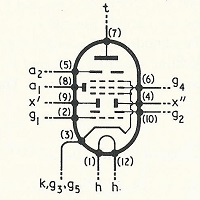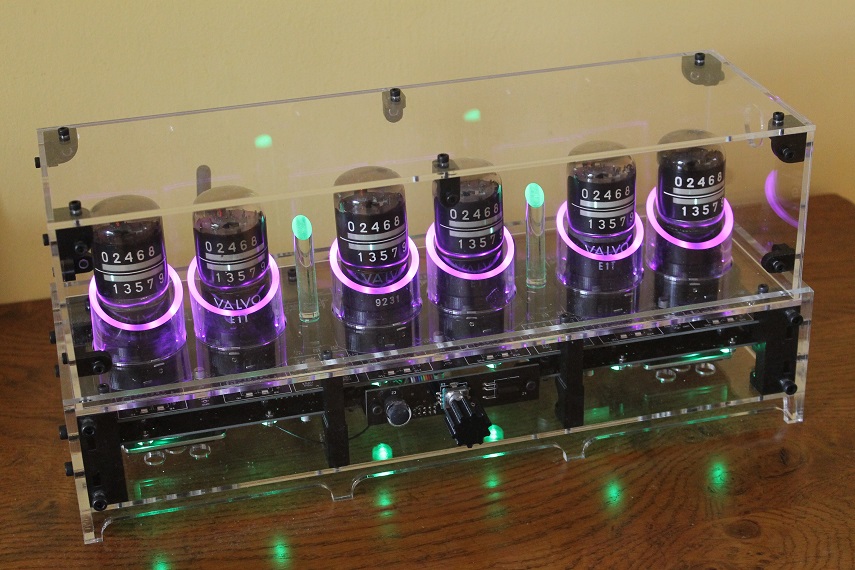
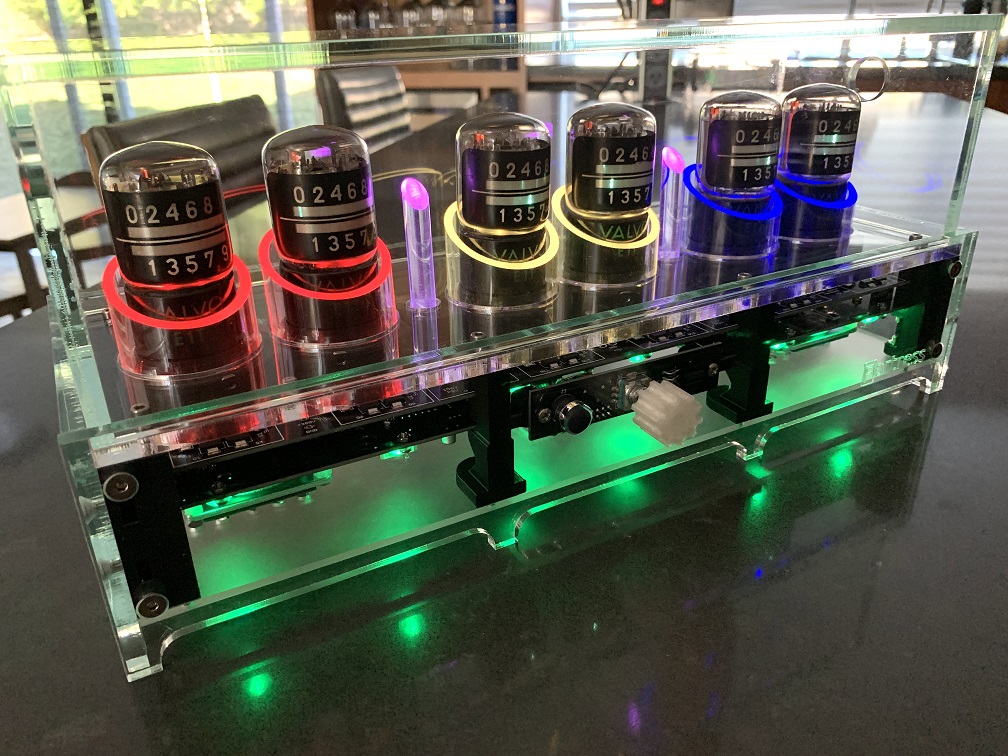
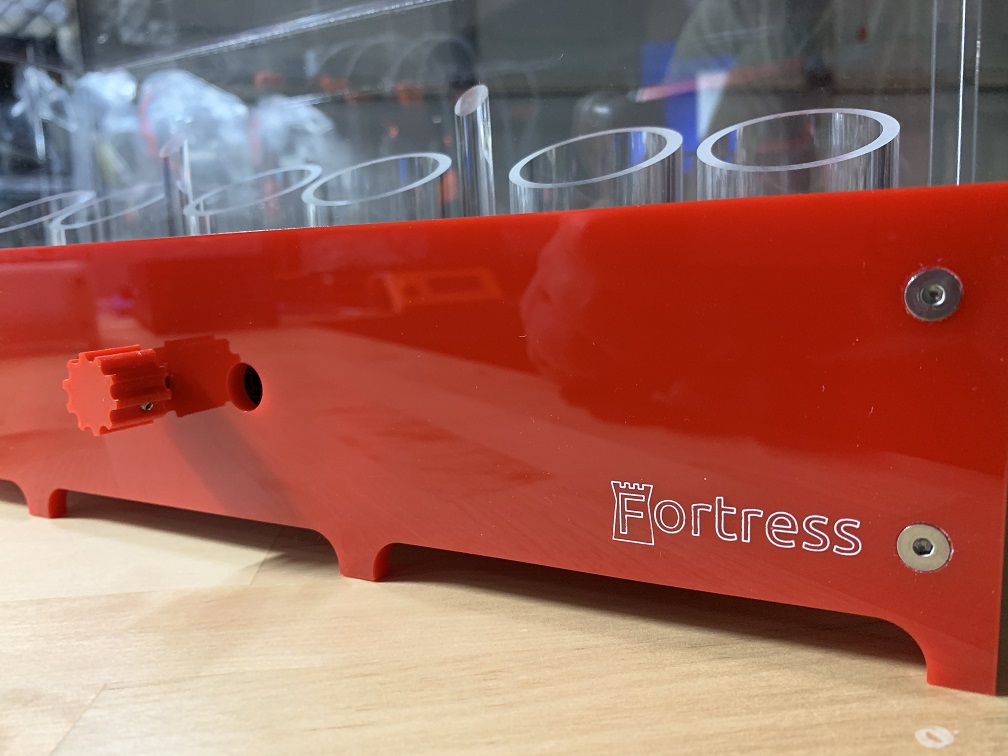
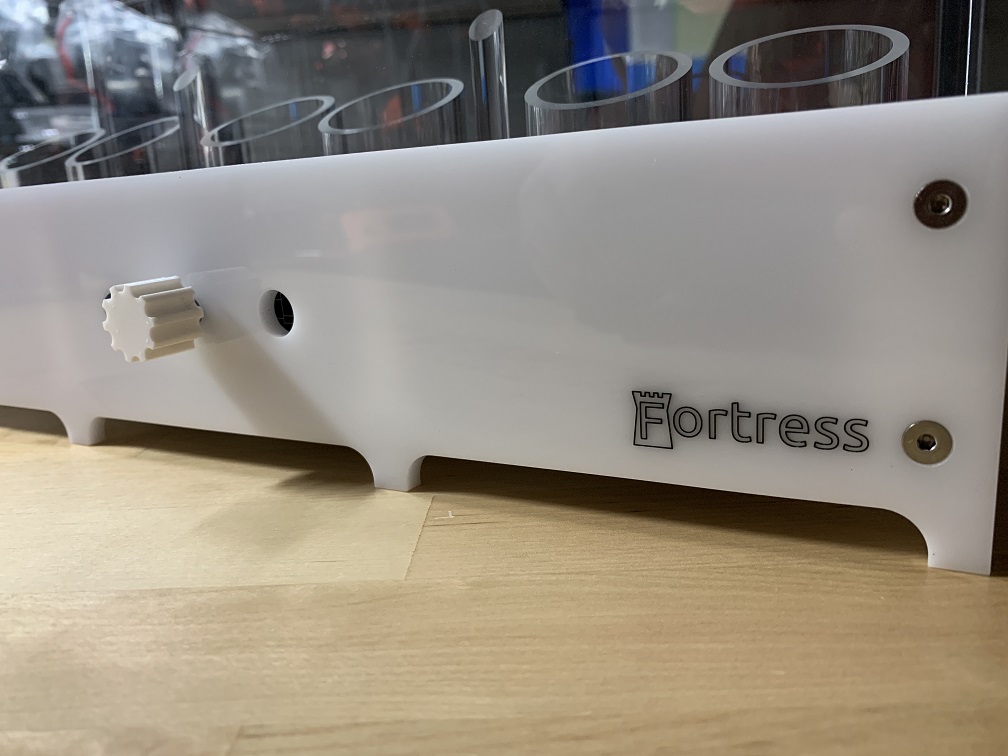
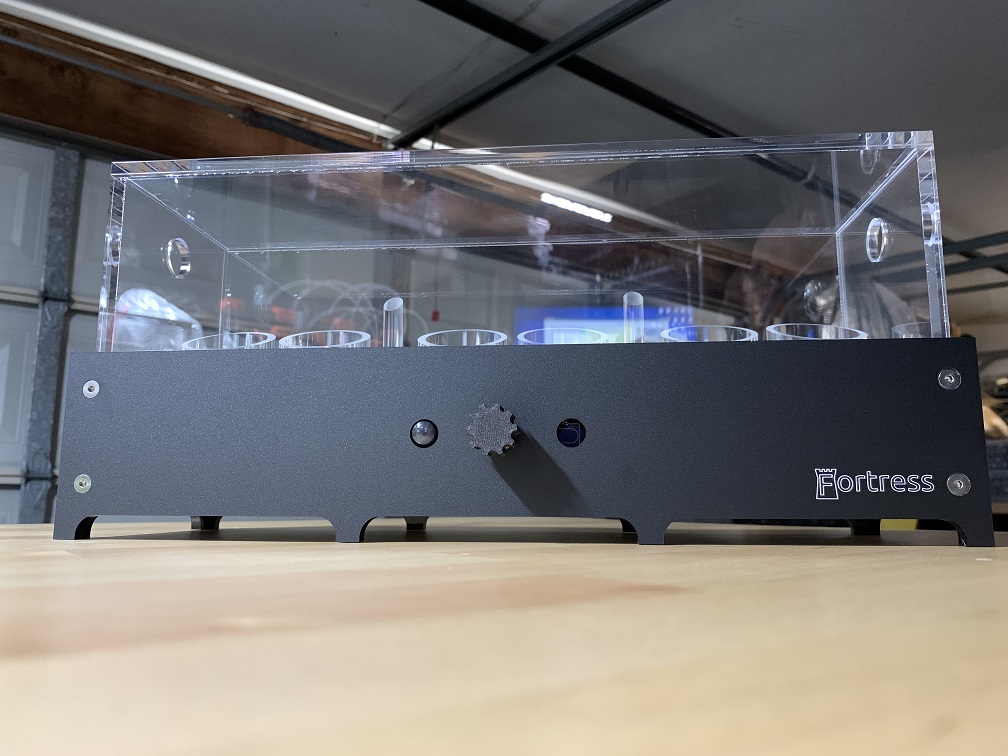
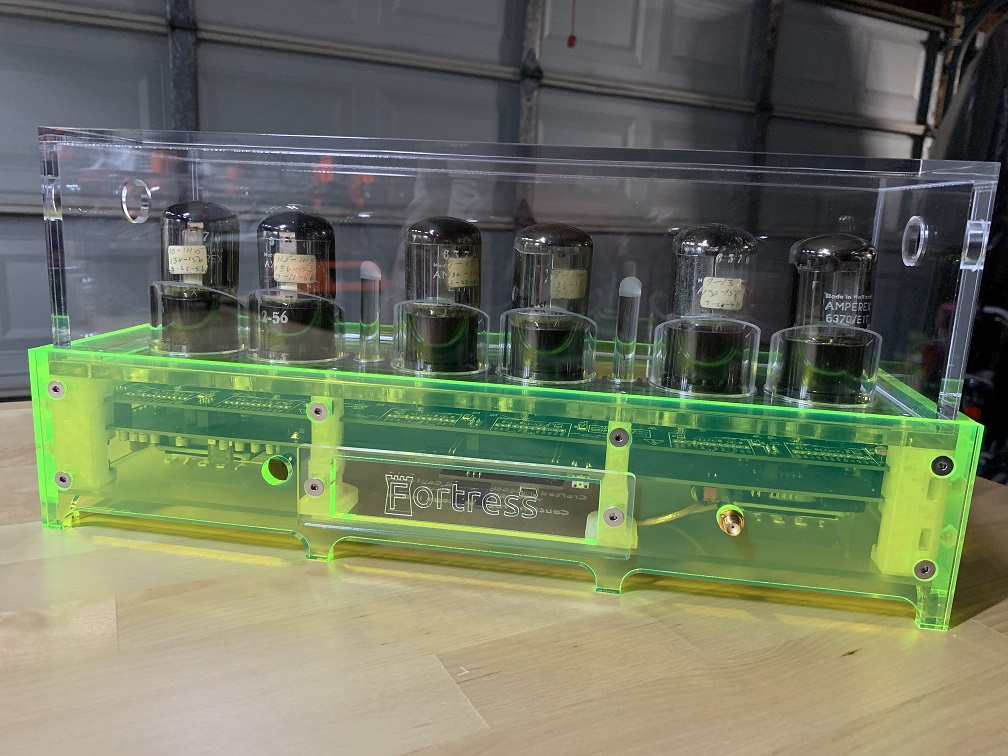
Introduction
What is The Fortress E1T Clock? It's the culmination of two like-minded individuals who like to tinker with vintage display technologies and turn them into functional time-pieces. This clock is unique in many respects. It is, to our best knowledge, the only "commercial" E1T clock offered for sale at this time. Others have offered PCBs etc., but this is the whole enchilada and as such is a rarity to be treasured and enjoyed. The Fortress E1T Clock is a combination of old-skool technology married with a very modern micro-controller and 21st century case construction and aesthetics. It offers lots of customisation options, such as different "faces", LED colours (bling), chimes, GPS or WIFI disciplined timekeeping and is also open source in its design philosophy.
What is an E1T tube?
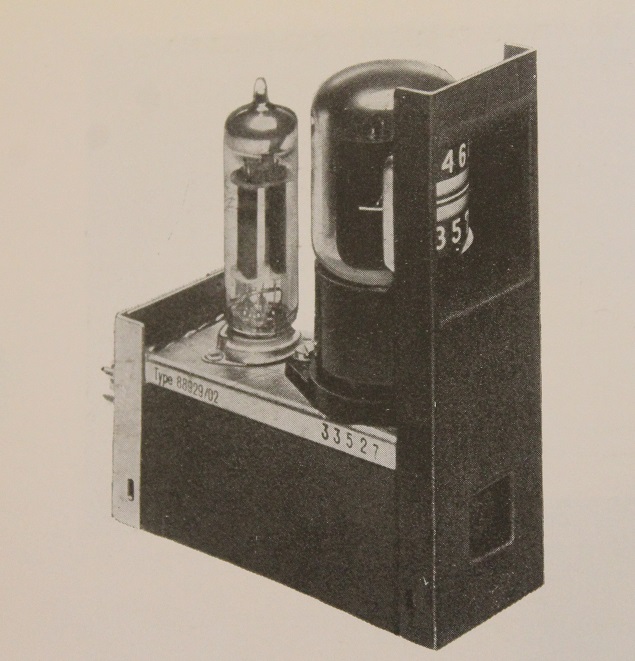
The plethora of methods developed during the late 1940's to the 1970's for displaying/counting numerical information were numerous and varied. These included incandescent displays (e.g. edge lit displays such as those from Non-Linear Systems), neon gas based displays such as Nixie tubes and Dekatrons, vacuum fluorescent displays (VFDs), light-emitting diodes (LEDs) and liquid crystal displays (LCDs). Some of these possess a certain charm, such as nixie tubes and Dekatrons with their warm orange glow and others not so much. What makes the E1T stand out from these technologies is that it represents the adaptation of another vintage display technology, the cathode ray tube into a discrete counting device. The E1T uses a cathode ray and some neat tricks to display a green line in 10 positions, each cunningly numbered from 0 to 9. These were used in early counters, such as the one pictured here:
A far more detailed explanation of how to electrically drive an E1T can be found in the project documents. There are also some great resources on the web for history and data about the E1T.
Here's a complete Counter by Philips that uses five E1T tubes:
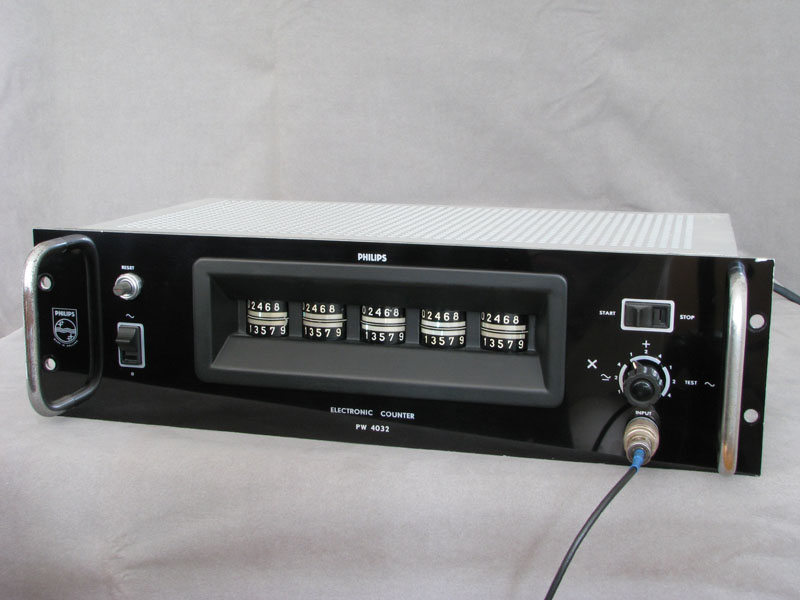
Although this webpage almost exclusively talks about the E1T tube, there should be no reason why the close clone or the E1T, the S10S1 made in East Germany, will not operate successfully as well.
Quick Links
- Introduction
- Describing the Hardware
- Describing the Case Options
- Describing the Software
- Open Design
- Documentation
- Kits
- Contact Me
- Further Reading
- Acknowledgements and other E1T Clocks
Describing the Hardware
The clock hardware is complex and we think comprehensive. We wanted to respect the rarity of these tubes by creating a first class clock to use them. The main elements of the hardware are:
- Six E1T tubes with drivers to pulse and reset each tube. Additionally, each tube has an anode switch so that only the tubes that are required need be illuminated *
- A 6.3V 1.8A power supply for the tube heaters. This power supply is switched on/off by the microcontroller so that the heaters can be turned off when not required *. Lastly, the power supply slow starts and takes about ten seconds to go from a 0V output to 6.3V output. This will reduce the current inrush to the tubes when they are switched on *
- A 300V 20mA power supply for the E1T tube anodes. This power supply is switched on/off by the microcontroller so it can be turned off when not required *. Secondary regulators fed from the 300V supply produce the intermediate voltages required by the E1T drivers such as 156V and 30V.
- A 5V 2A power supply with a voltage supervisor chip
- A 3.3V 1A power supply
- Either a super cap or lithium coin cell to provide back up power
- An external 12V DC 5A power supply for the clock
-
A plug in microcontroller unit that uses a SAM3X8C microcontroller (this is a smaller brother of the SAM3X8E
used on the Arduino Due but unlike the Arduino, the implementation is not neutered). The plug in board carries:
- its own 3.3V regulator
- a 32.768kHz temperature compensated crystal oscillator for time keeping
- a USB interface that is used to make the SD card (see below) appear as a removable disc drive
- a serial interface for programming the SAM3X8C and to act as a simple serial console
- A high speed native SD card (not using the SPI) which can be used at a 50MHz clock speed and has a 4 bit interface with the microcontroller. The SD card is used to store all the configuration data for the clock. Most configuration data is stored in simple text files (INI or CSV) so they can be edited by the clock owner. The SD card also stores the audio files (WAV) that are used to play the clock's chimes (see below)
- A small amount of non-volatile memory to store clock internal data without needing to write to the SD card
- Eight user selectable jumpers to hardware select operating options that can override any software settings
- Stereo audio amplifiers used to play sounds for chimes, warning beeps etc.
- A rotary encoder to select the clock "face" to display (date, time etc.) and to adjust the chime sound volume
- An infrared receiver and remote handset to provide more comprehensive control than the rotary encoder provides
- A PIR sensor to detect room occupancy. If the PIR does not "see" anyone for a period of time then the tube heater and high voltage power supplies can be shut down - the clock goes to sleep *
- An optional plug in module that can carry:
- An ESP32-BIT WIFI module to use a local network to acquire the date and time. There is the potential here to fetch other information from the internet. The Bluetooth interface is currently unused
- A GPS module to acquire the data and time. The number of satellites in view and in use is also available
- A simple serial interface (in development) to acquire data from other external gizmos
- A lot … I repeat … a lot of LED tri colour modules to bling-bling the clock. Modules are used to illuminate acrylic light guides around each tube and a few also point downwards to illuminate the clock's base. Two further modules are used to light acrylic light guide colons between pairs of tubes
- Any unused microcontroller I/O pins, the TWI bus and the SPI bus (3 channels unused) are brought out to optional connectors to facilitate expansion
- An external programmer and serial console box. This has a USB interface to your PC. It is used to program the SAM3X8C and the ESP32-BIT (if used), and acts as a serial interface using a simple menu command system.
The items marked * above are primarily intended to prolong the life of the E1T tubes although they may have secondary benefits such as reducing power consumption.
Quick LinksDescribing the Case and Cover Options
Build your own
The simplest case option is to craft your own design. The physical size and board layouts will limit what you can do. But the choice of materials is entirely your own.
Safety: If you have a metal case or exposed metal parts then you must electrically bond the metal to the clock's negative supply. There is a screw connector on the main board for this purpose.
Simple Acrylic Case and Cover
Currently unavailable
- 3mm and 5mm clear laser cut acrylic case
- 3mm laser cut clear acrylic dust cover
- Dust cover assembled using black 3D printed corner parts
- Assembled with black hex head screws
- Supplied from Scotland
Premium Acrylic Case and Cover

- 3.2mm and 6.35mm laser cut acrylic case
- Choice of acrylic colours (the photo shows the case in "glass look" acrylic)
- Choice of fill in colour for the etched labels
- Side panels assembled with countersunk screws; remainder hex headed screws
- 6.35mm laser cut acrylic dust cover (the photo shows the case in "glass look" acrylic)
- Dust cover is suppled assembled with welded joints
- Supplied from the San Diego, USA
Because the premium cases are made to order, please allow about 4 weeks from ordering to shipping.
The choice of acrylic colours is wide and includes translucent, frosted, mirrored, tinted, fluorescent as well as conventional colours. If the case sides are opaque to IR then an additional hole is cut in front of the IR receiver. The premium case has additional engraved elements and these can be filled with a choice of colours.
The costs presented on shop page are for a fairly typical selection of acrylic colours. If you plan something exotic then the costs may be higher …
Limited Edition Aluminium Case and Acrylic Cover
A case using black anodised aluminium sides is in development. The cover will be welded 6.35mm thick clear or tinted acrylic.
Likely timescale and costs are not available at the moment.
The case will only be available for fully built and tested clocks.
Quick LinksDescribing the Software
For the SAM3X8C
This is written in C using Atmel Studio 7 and the GCC ARM compiler. It makes extensive use of the Atmel libraries.
The source code is open. You can download the complete source code from the project dropbox together with compiled binary file. The binary is burned into the SAM3X8C using the external programmer and BOSSA flash programming utility.
Instructions for burning the SAM3X8C using the external programmer and, should you wish, compiling the source code are in the project documentation.
For the ESP32-BIN
The ESP32-BIN module uses compiled binaries from the ESPRESSIF website.
Instructions for burning the ESP32-BIN using the external programmer are in the project documentation.
For the MEGA16U2 (on the external programmer)
This is written in C using Atmel Studio 7 and the GCC AVR compiler. It is open source. It uses the Atmel and LUFA libraries.
The source code is open. You can download the complete source code from the project dropbox together with compiled binary file. The binary is burned into the SAM3X8C using the external programmer and BOSSA flash programming utility. The SAM module will normally be supplied fully assembled and tested with the latest firmware burned.
Instructions for burning the MEGA16U2 and, should you wish, compiling the source code are in the project documentation. The MEGA16U2 will normally be delivered burned with the latest firmware and the programmer partially built and partially tested.
About Nuggle

Ok, you are now thinking, what's a Nuggle?
What has a mythical creature from Shetland folklore got to do with the Fortress E1T Clock? I will explain some of the details…
Consider what happens when the clock is running:

Happenings or Events occur such as shown on the left … such as the clock ticks, the PIR senses motion and so on. The clock software must then decide what to do. So, for example, if the clock is currently showing the time in a hh:mm:ss format and the clock ticks one second then the E1T display will need updating, the clock colons, if flashing, will need their state changing and if a tick sound is played then that will need to be started.
In other words, given a range of Events, the clock software must Decide on what Actions to take.
The starting events are fairly few in number as seemingly are the actions to take. But when you consider that there are twenty one events for the IR handset (one for each key), there are about a dozen sleep states and six types of tick (second, minute, hour, day, month and year) the starting event list grows in size. The actions you can take for the chime sounds is to play any audio file on the SD card (so the number of audio files is only limited by the SD card capacity), the number of beeps (frequency, duration, stereo channel) is similarly a large number, there are 32 bling LED modules, each module can (in theory) display over sixteen million colours. Against these numbers the E1T tubes are much more defined with only eleven states to consider (0…9 and off) giving a mere sixty six options.
A common course would be to write code in C that handled a number of configurations where the actions taken for each event are programmed and burned into the SAM3X8C microcontroller. There is a disadvantage to this approach - editing or creating new clock configurations requires the source code to be edited, compiled, burned and then tested. It also makes the distribution of any new configuration more difficult. Therefore a different approach has been taken - to encompass the decision making process in a simple text script on the SD card. Here's an example:
The script "language" is a mixture of Pascal and C, and, for reasons that I'm going to leave obscure, I called it Nuggle. The text files on the SD card have a .NUG extension.
The example above does no more than display the current local time on the six E1T tubes. It does allow for the user time display preference (leading zero suppressing on the hours and 12 or 24 hour format). And it flashes the colon light guides each second. But it makes no use of the other light guides, no use of the chimes and it certainly does not beep.
The Nuggle language manual is available from the the project dropbox. Nuggle has a Fortress E1T clock supplement covering the Nuggle commands that are unique to this clock. The intention is that Nuggle will be extended to work with future Sgitheach clocks.
Quick LinksAbout Open Source
One intent of the Fortress E1T Clock project from the outset was that the hardware and software would be fully open. The project documentation is held on a dropbox where you will find:

- The full schematics as images
- PCB layouts as images
- PCBs as Gerbers (used for manufacture)
- Parts lists with suggested sources
- Eagle (version 7.7.0) schematic and layout files
- All 3D printed parts as STL files (see below)
- All acrylic case laser cutting information as DXF files
- All aluminium case information as DXF files

- The source code of all the code written by us (there are elements from third parties that are only available as binaries) so this includes:
- Source code for the MEGA16U2 used in the clock programmer
- Source code for the SAM3X8C used in the main clock
- The source code files as provided as Atmel Studio 7 projects
- All clock "face" control files (will be on the SD Card in the clock)
- All clock data files (DST rules, Time Zones, Help files etc. on the SD card)
If I have missed anything from the list that I should be providing then rest assured that I will.
The 3D printed parts and other case components were designed in Fusion 360. Whilst the F360 files are not immediately available on the dropbox, I will provide them if asked. The reasons I don't immediately provide them is they are a bit of a faff to export from F360, that I suspect the demand for them will be low and they would represent yet something else to keep updated.
Quick LinksDocumentation
The distribution centre for documentation specific to the Fortress E1T clock is available from this Public Dropbox folder, "/E1T Projects/Fortress E1T Clock", dedicated to the project.
A second folder, "Common Stuff", provides access to information that used by the Fortress E1T Clock but is also common to many other Sgitheach Projects:
- SAM3X8C plug in module
- SAM3X8C programmer
- GPS plug in module
- WIFI plug in module
- Simple DC power supplies
- Nuggle
- 3D printed parts
- WAV files
Quick Links
Kits
Fortress E1T Clock Kits have sold out!
Built and tested clocks are still available from Stock's Clocks.
N.B. None of these kits include E1T tubes - they are yours to provide or can be bought separately!
The prices of all these kits and E1T tubes are here.
Minimum Electronics Kit
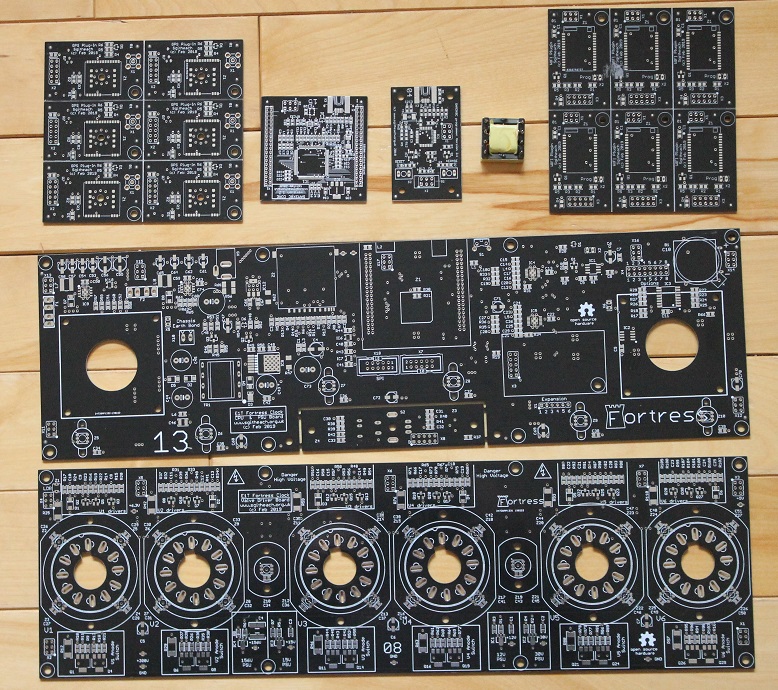
This kit includes:
- Bare main PCB
- Bare display PCB
- Bare SAM3X8C plug-in board PCB
- Bare Programmer board PCB
- Either the bare GPS or the bare WIFI plug-in board PCB or neither
- Custom wound flyback transformer
If you take this kit then I assume you know what you are doing! There are a lot of parts to collect. You need to be confident to be able to solder parts as small as 0603 and a LQFP100 part with 0.5mm lead spacing. You will need access to a 3D printer and be able to cut acrylic tubing accurately.
The photograph of the minimum kit shows 2x3 panellised GPS and WIFI plug in boards. You will receive only one …
Of course the real minimum kit is nothing at all - you take the Gerbers and get your own boards made and get the custom transformer wound yourself. The minimum kit here represents what I think is a more likely kit where I supply the bare PCBs and the flyback transformer.
Standard Electronics Kit
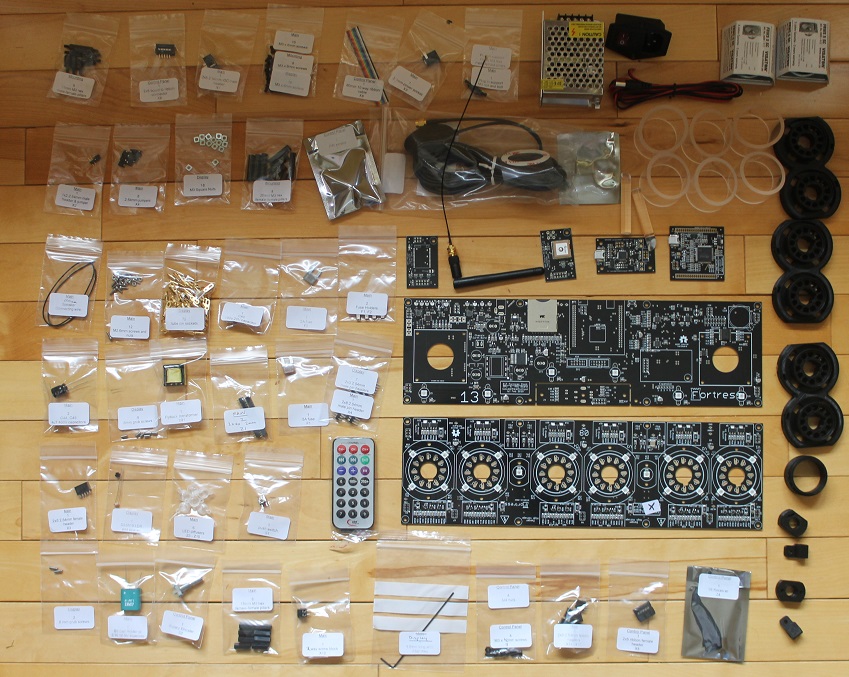
This kit includes:
- Main board with all SMD parts soldered
- All through hole components to complete the main board
- Display board with all SMD soldered
- All through hole components to complete the display board
- Fully built and tested SAM3X8C plug-in board
- SAM3X8C programmer board with all SMD soldered (see note below)
-
- Either the GPS plug-in board with all SMD parts soldered, or
- the WIFI plug-in board with all SMD parts soldered except the ESP32-BIT module, or
- neither (the clock date and time must be set manually)
- All through-hole components to complete a GPS or WIFI plug-in board as appropriate
- External GPS antenna and bulkhead connector or external WIFI antenna and bulkhead connector as appropriate
- All 3D printed parts used to assemble the main and display boards
- Hardware such as nuts and bolts, together with standoff pillars to hold the boards for testing prior to assembly into a case
- Acrylic light guides cut to length and finished ready for use
- Remote control IR handset
- Power supply parts
The photograph of the standard electronics kit includes both the GPS and WIFI plug in components. You will only receive those you buy …
The SAM3X8C programmer board uses a ATMEGA16U2 microcontroller that must be programmed using a suitable AVR programmer. If you wish I will burn the mega for you for no charge.
Standard Electronics, Simple Case and Cover
In addition to the standard electronics kit above, the Standard Electronics, Case and Cover kits includes additionally:
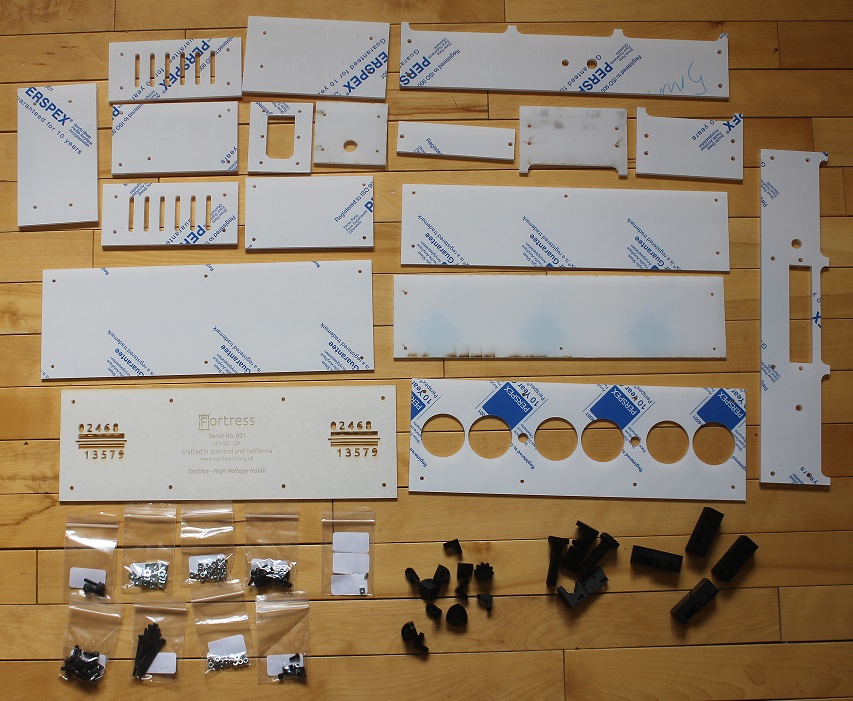
- 3mm and 5mm thick laser cut clear acrylic to build the cases for the clock and power supply
- 3mm thick laser cut clear acrylic to build a dust cover for the clock
- 3D printed parts used to joint the acrylic together, a knob, and cable gland
- All the required nuts, bolts etc. to assemble the acrylic and 3D printed parts
Standard Electronics, Premium Case and Cover
In addition to the standard electronics kit above. The Standard Electronics, Premium Case and Cover kits includes additionally:
- 3.2mm and 6.35mm thick laser cut clear acrylic to build the cases for the clock and power supply
- 6.35mm thick laser cut clear acrylic welded together for a dust cover for the clock
- 3D printed parts used to joint the acrylic together, a knob, and cable gland
- All the required nuts, bolts etc. to assemble the acrylic and 3D printed parts
There is a wide range of acrylic colours you can choose from for the 3D printed parts, case and cover.
What if the kit you want is not listed?
In principle, I will assemble a kit containing the parts you request.
But I am reluctant to provide a kit containing all the SMD parts loose for several reasons. It takes a considerable time to bag and label all the SMD parts; a considerable amount of waste is generated by the kit purchaser when all the bags have been emptied. Unassembled kits I will normally fully refund (other than the postage) if returned. However, I cannot easily use short lengths of SMD tapes on my pick and place machine so I can only offer a partial refund.
Fully built?
Built and tested clocks are still available from Stock's Clocks.
Shipping
The electronics kits and simple acrylic case and cover kits are shipped from Scotland. Postage will be whatever I
have to pay and no more. A complete kit will normally be shipped with tracking and insurance. Outside of the UK
shipping will be by air. Inside the UK shipped Royal Mail "Special Delivery" is normally used. I will give you an
estimate for shipping to your location based on Royal Mail
prices and then the actual cost when posted.
The Premium Case and Cover kit (with no electronics) are shipped from San Diego USA. USPS will normally be used.
Quick LinksContact
Please contact me with any questions or enquires about ordering or postage.
Quick LinksFurther Reading
Electronic Counting Circuits JB Dance 1967 Iffle Books Ltd.
E1T, from Dieter Wächter
S10S1 from Dieter Wächter
From Ronald Dekker and also
on the making of the E1T.
An E1T Tester
Joachim Gittel (in German)
Elektor - registered users only
E1T Frank Philpise
S10S1 Frank Philpise
Philips PW4032 Counter
S11S1 HT Schmidt (in German)
Acknowledgements, E1T Clocks and Testers, E1T on YouTube
Dieter Wächter
Ronald Dekker
Ronald Dekker on YouTube
HACKADAY.IO
Steampunk Alchemy
https://sites.google.com/site/benadski/electronics-1/e1t-clock - this link doesn't open correctly for me
Benadski on YouTube
KainkaLabs on YouTube
moelarryshemp on YouTube
MACBSD on YouTube
Armin Schoen on YouTube
Jens Pahl on YouTube
An E1T counting forwards on YouTube
An E1T counting backwards on YouTube
An E1T counting backwards - an oscilloscope's view on YouTube
Mike's Electric Stuff has a brief mention
